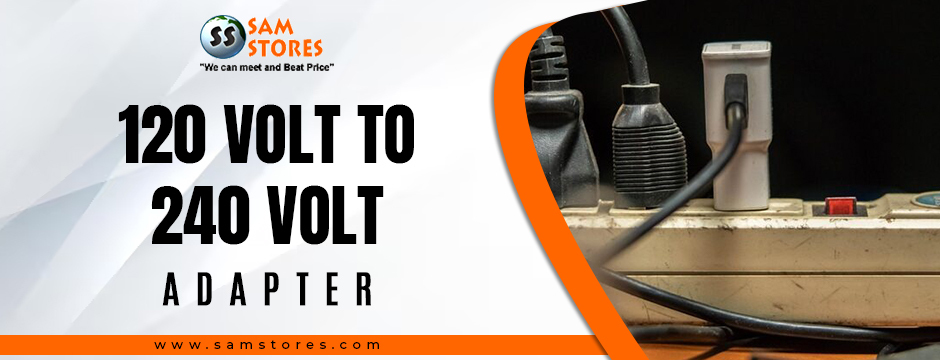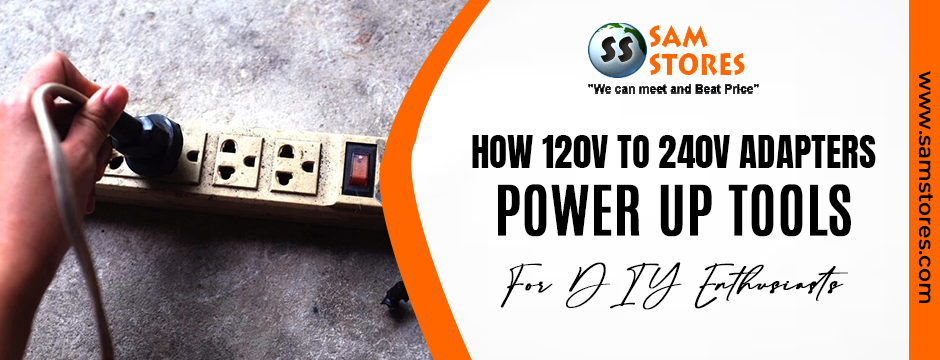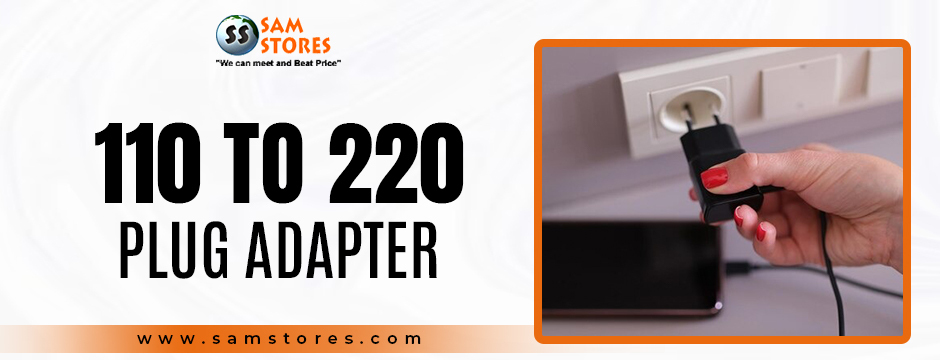If you’ve ever bought a tool online or picked one up while traveling abroad, you’ve probably faced that sinking moment: the plug doesn’t match, or worse, the voltage is completely different. You’re ready to dive into your next project, but your brand-new saw or drill refuses to work properly. For DIY enthusiasts, few things are as frustrating.
This is where a 120-volt to 240-volt adapter earns its place in your toolkit. It’s not a glamorous gadget, but it can completely change how you use and protect your tools. At Sam Stores, we’ve seen countless customers turn to these adapters not just as a quick fix, but as a long-term solution for running imported equipment at full power.
Why Voltage Matters More Than Most DIYers Think
Most homes in the United States run on 120 volts. That works fine for plenty of everyday devices, but many heavy-duty power tools are designed for 220–240 volts, especially those made in Europe or Asia. When you plug one of those tools straight into a 120-volt outlet, you’re essentially starving it of the power it was built to handle.
What happens then? Either the tool feels weak and underpowered, or in some cases, it simply overheats and burns out. Neither outcome is good for your projects or your wallet.
DIY projects depend on reliable performance. If you’re cutting hardwood for a deck, drilling into concrete, or sanding down reclaimed wood, you need the tool to operate at its full potential. A proper adapter ensures that happens.
How a 120 Volt to 240 Volt Adapter Helps in Real Life
Think of it this way: you’ve bought a professional-grade European drill because it has the torque you couldn’t find in local models. Plugging it directly into a 120-volt socket in the US leaves it sputtering. Connect it through the right adapter, and suddenly the drill wakes up and performs as it should.
That’s the difference between struggling with half-powered tools and finishing a job with precision.
The Benefits Every DIY Enthusiast Can Relate To
- Your tools actually perform
With an adapter, you’re giving the tool the voltage it needs, so there’s no loss of power or performance.
- You protect your investment
Tools aren’t cheap, especially high-quality imports. A 110 to 220 plug adapter prevents damage from mismatched voltage.
- It makes your workshop more flexible
Maybe you’ve got a mix of local and imported gear. With the right adapter, you can run everything without worrying about compatibility.
- It’s practical for travel and side jobs
Some DIYers carry their tools with them, whether for friends, side projects, or vacation homes. A 220v plug to 110v adapter works the other way, letting you use your US tools abroad.
- It saves you from project delays
Nothing derails a weekend project faster than a tool that refuses to power up. Having an adapter ready means you keep working without interruption.
Choosing the Right Adapter
Not all adapters are the same, and choosing the wrong one can be just as risky as not using one at all. Here are a few tips we share with customers at Sam Stores:
- Check the wattage of your tool. If your saw pulls 1800 watts, your adapter should comfortably handle more than that.
- Look for sturdy build quality. Workshops are tough environments, and flimsy adapters don’t last.
- Consider portability. If you move between job sites, a compact, travel-friendly 110 to 220 plug adapter is a smart choice.
- Pay attention to safety features. Built-in fuses or surge protection can prevent accidents and extend the life of your tools.
Mistakes People Commonly Make
It’s easy to assume any adapter will do the job, but we see a few common missteps:
- Buying a simple plug adapter and thinking it converts voltage (it doesn’t).
- Underestimating wattage requirements.
- Skipping safety features to save money.
- Not planning ahead for multiple tools.
These mistakes can cost more in the long run than investing in the right solution from the start.
Why DIYers Trust Sam Stores
At Sam Stores, we don’t just list products; we help customers choose solutions that actually fit their needs. That means guiding someone who just bought their first imported drill, or helping a seasoned woodworker set up a workshop that runs a mix of 120V and 240V tools.
Here’s why DIYers keep coming back to us:
- We carry a wide variety of adapters, from compact travel units to heavy-duty converters.
- Our staff knows the difference between a casual fix and a long-term solution, and we make sure you get the right one.
- Every product we stock meets strict quality and safety standards.
- Pricing is competitive, but without cutting corners on performance.
For us, it’s not about selling the most expensive option. It’s about making sure you walk away with something that works reliably and keeps your projects on track.

Final Word
For DIY enthusiasts, tools are more than just equipment. They represent independence, creativity, and pride in a job well done. A 120 volt to 240 volt adapter might not seem exciting compared to a shiny new saw or drill, but it’s what makes those tools usable and dependable.
If you’ve been holding off on buying imported tools because of voltage differences, now’s the time to rethink it. With the right adapter, you’re free to choose the best tools from anywhere in the world and use them with confidence in your own workshop.
At Sam Stores, we believe that when your tools perform at full power, so do you. Browse our collection today and see how the right adapter can power up not just your equipment, but your entire DIY experience.



